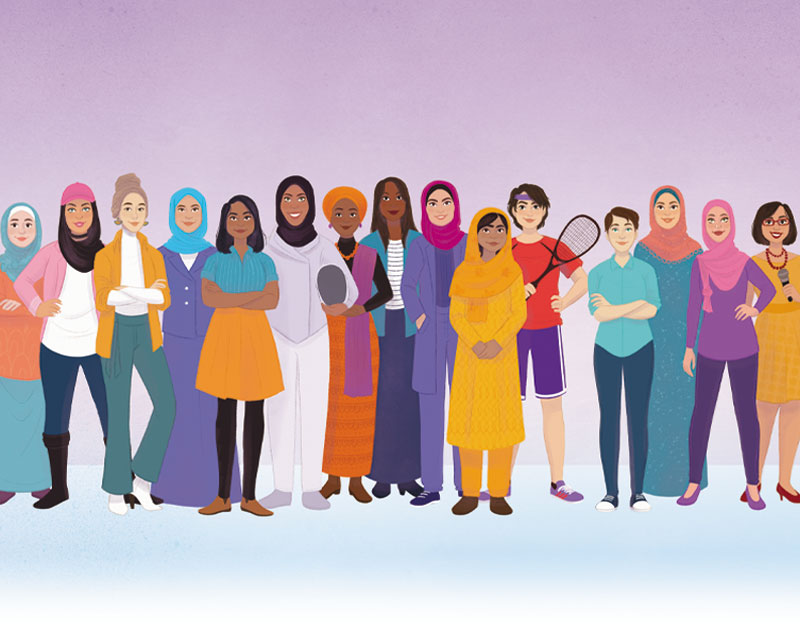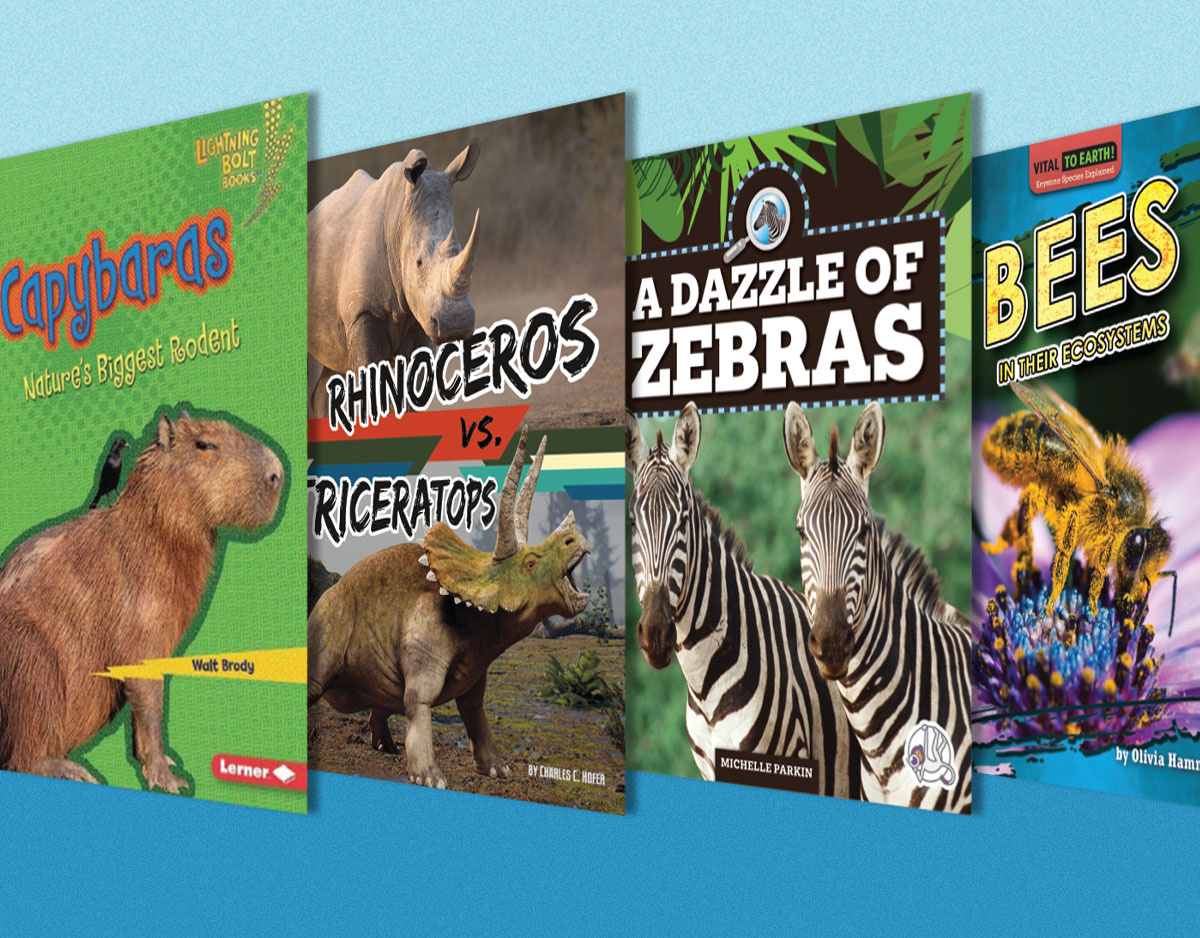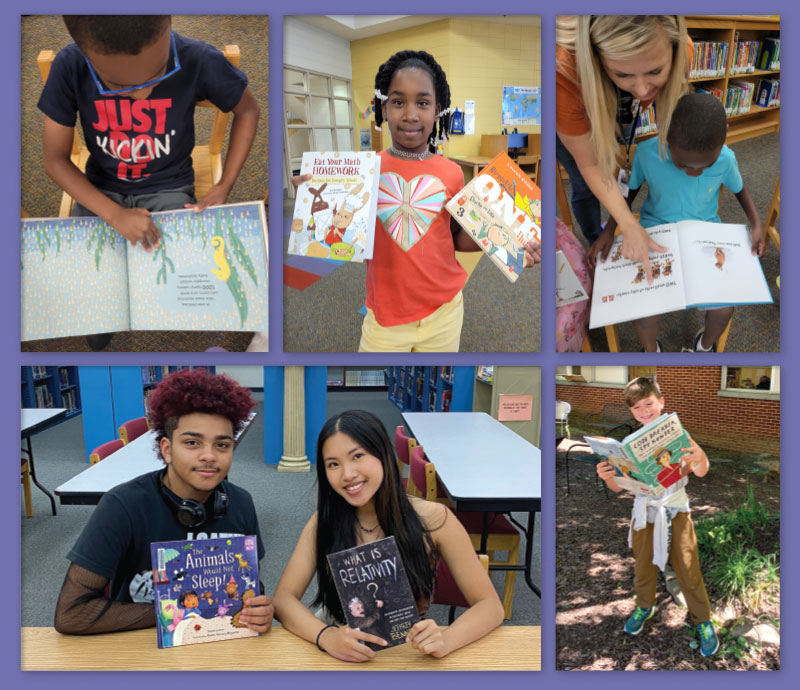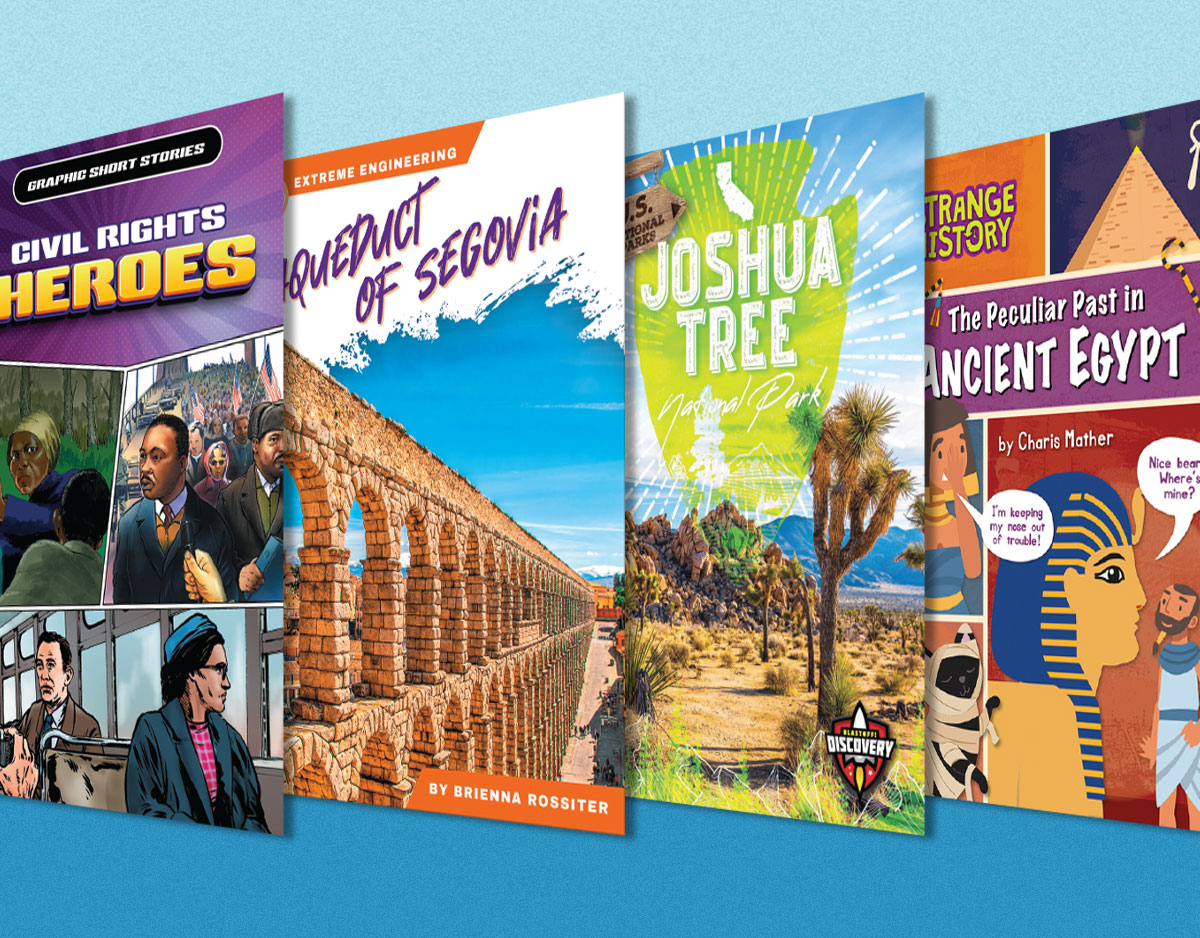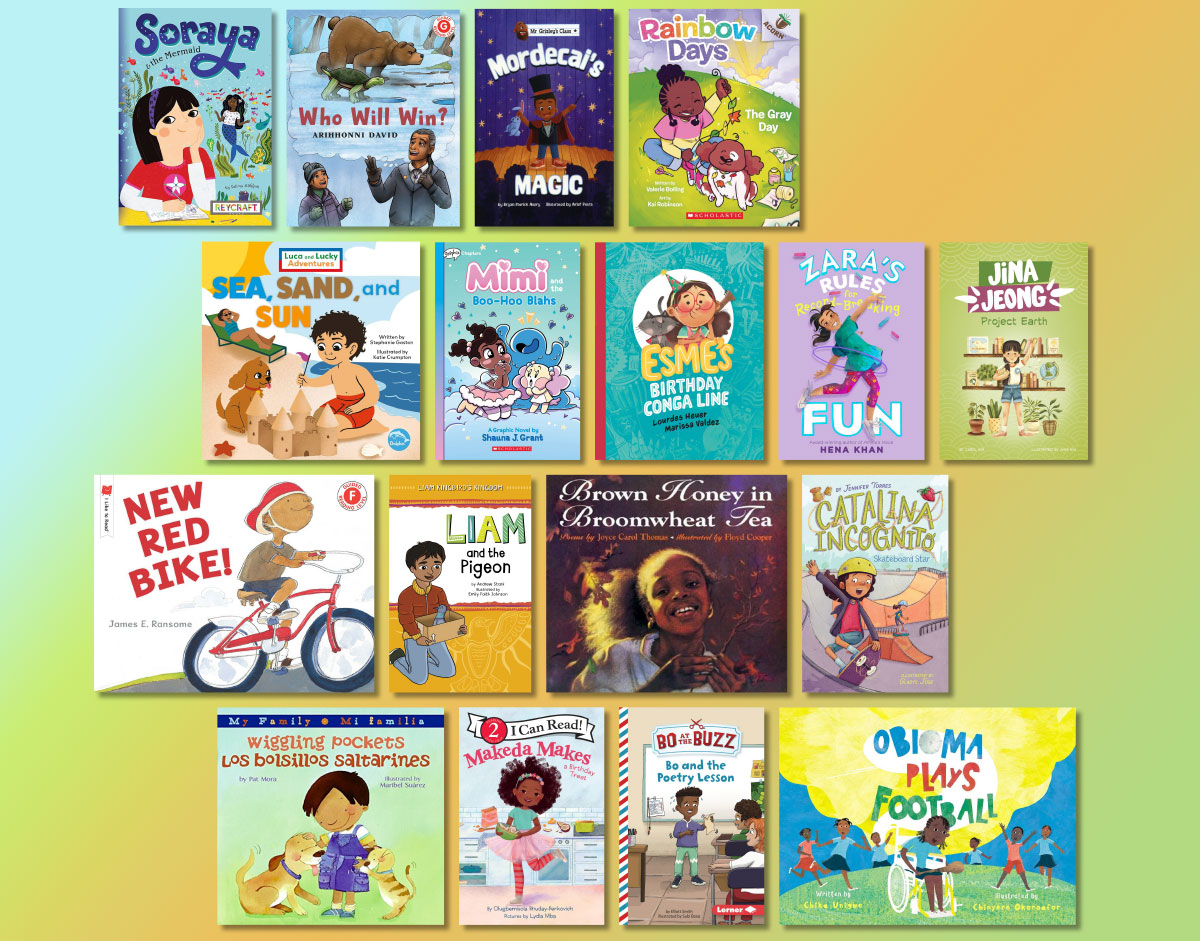On a Beam of Light
On a Beam of Light: A Story of Albert Einstein
Written by Jennifer Berne; Illustrated by Vladimir Radunsky
Published by Chronicle Books, 2013
ISBN # 978-0-8118-7235-5
Grades K and up
Book Review
Albert Einstein’s”biggest, most exciting thought”wasn’t his general theory of relativity or his mass-energy equivalence formula E=mc2. Instead, it was a vision he imagined while riding his bike as a young boy: the image that he was “racing through space on a beam of light.” In On a Beam of Light, picturebook author Jennifer Berne shares Einstein’s life story and professional achievements with children, angling it through a lens they can specifically relate to: that of sheer curiosity and wonder at the world around them. Berne’s simple and clear prose contrasts young Einstein’s reticence with his insatiable inquisitiveness, constructing an appealing introductory text about the Nobel winning physicist. An author’s note at the back entices readers to learn more about Einstein. Vladimir Radunsky’s quirky and charming pen-and-ink illustrations underscore the accessibility of the text, while the fibrous composition of the pages themselves serve as constant reminder of how Einstein’s understanding of our world showcases what seems invisible. Add this book to your biography units, use it to supplement your science curriculum, or share it as an excellent example of how simply wondering and imagining can revolutionize how we understand our world.
Teaching Invitations and Ideas
Grades K and up
Introducing Scientists and Science Units. Read aloud On a Beam of Light to launch a unit on a variety of science topics, from basic principles of physics to the properties of light. Alternatively, you can use On a Beam of Light in a unit on influential scientists in history. Have students research and read information about Galileo, Thomas Edison, Marie Curie, etc., along with Albert Einstein. Then invite them to share what they learned in a poster gallery, on a series of pages on a class website, or in entries on a class blog.
ADVERTISEMENT
ADVERTISEMENT
Letters to Einstein. Read aloud some excerpts from Dear Professor Einstein: Albert Einstein’s Letters to and from Children (see Further Explorations section below). As a class, brainstorm questions, responses, and comments that students would share with Einstein and list them on a chart. Have them each select something the chart as the focus of writing his or her own letter to Einstein. You might also want to challenge other students in the class (or perhaps another class) to assume to persona of Einstein and use everything they know about him to write a response letter back to each student.
Time to Wonder. Einstein’s story serves as a prime example of the importance of nurturing children’s imagination and capacity to wonder. Set aside some time for students to observe the world around them and pose a number of questions about what they wonder. Take them outside to sit in a nearby park, visit a museum gallery, or sit on the front steps of the school building to help open their minds. Have them write these questions in a writer’s notebook, or compile a class list of questions. You might also share some poet Pablo Neruda’s Book of Questions, or share The Dreamer, Pam Munoz Ryan’s award-winning biography of Pablo Neruda (see http://classroombookshelf.blogspot.com/2011/01/ala-pura-belpre-winner-dreamer.html) to serve as examples of the kinds of profound questions one can come up with if simply allowed the time to wonder.
Grades 5 and up
Einstein Online. A plethora of websites offer interactive games and activities based on Einstein’s theories and discoveries for students to both learn from and enjoy. Do an internet search or use some of the links listed below in Further Explorations, and gather a variety of these websites. Take your students to the computer lab, distribute classroom iPads, or work together as a whole class to try some of these activities. Afterwards, have students reread On a Beam of Light to connect the activity to the details provided in the book to determine how those activities were inspired.
Thought Experiments. At just 16 years of age, Einstein conducted a thought experiment about traveling at the speed of light that served as the impetus for developing his views on relativity. Thought experiments are experiments that one must think about carefully and conduct only through the imagination, since it’s currently impossible to carry it out in reality. Watch the PBS video on Einstein’s thought experiments (http://video.pbs.org/video/1981545580/) and discuss what it means to conduct a thought experiment. Then, challenge your students to conduct some thought experiments on their own. If they have trouble coming up with their own initial questions to launch their thought experiments (some kids have been wondering about all sorts phenomena in our world on their own), pose some famous philosophical questions (e.g., If a tree falls in the woods and no one is around to hear it fall, does it make a sound?), or refer to the books and websites listed in Further Explorations below. Have students present their thought experiments in a variety of modes: written reflection, role play, video, script, etc.
Critical Literacy
Comparing Biographies for Kids. Since he is arguably the most influential and important physicist of the twentieth century, a number of biographies have been written about Albert Einstein for young readers. Gather a set of these biographies (see Further Explorations below for some examples) and share them with your students. Read each title to first compare how each author frames his or her view of Einstein. Next, reread the stories with a focus on writing style. What can you learn about writing biography from studying the authors’ writing choices? In each book, what events in Einstein’s life receives most emphasis? How does Jennifer Berne, in particular, use details to characterize Einstein? How are quotations used and documented? What kinds of information are provided in an author’s note? What is similar and different in terms of content across the biographies? Make sure to address any discrepancies that students notice, and to discuss them in terms of author’s perspective and the power of words on influencing a reader’s understanding as well.
Further Explorations
Online Resources
Jennifer Berne’s website
http://www.jenniferberne.com
Vladimir Radunsky’s website
http://www.vladimirradunsky.com
Interview with Jennifer Berne about On a Beam of Light
http://www.reading.org/general/Publications/blog/BlogSinglePost/engage/2013/05/31/5-questions-with-jennifer-berne-on-a-beam-of-light#.UazVY5XZjdk
Albert Einstein official site
http://einstein.biz
Einstein Archives Online
http://www.alberteinstein.info
Albert Einstein bio pages
http://www.nobelprize.org/nobel_prizes/physics/laureates/1921/einstein-bio.html
http://www.biography.com/people/albert-einstein-9285408
http://www.britannica.com/EBchecked/topic/181349/Albert-Einstein
Albert Einstein information pages for kids
http://www.shmoop.com/albert-einstein
http://www.einstein-website.de/z_kids/biographykids.html
http://kinooze.com/2012/11/23/who-was-albert-einstein
American Museum of Natural History Einstein Exhibition
http://www.amnh.org/exhibitions/past-exhibitions/einstein
http://www.amnh.org/exhibitions/past-exhibitions/einstein/promos/for-educators
NOVA: Einstein’s Big Idea
http://www.pbs.org/wgbh/nova/physics/einstein-big-idea.html
Pictures of Albert Einstein
http://th.physik.uni-frankfurt.de/~jr/physpiceinstein.html
Online Einstein-inspired activities
http://faculty.washington.edu/chudler/ein.html
http://www.pbs.org/wgbh/nova/time/think.html
http://www.amnh.org/explore/ology/einstein/?pop=29435
http://library.thinkquest.org/27608/normal.html
http://library.thinkquest.org/22494/stories/Einstein.htm
http://www.fearofphysics.com/Relativity/house.html
Official Website of the Nobel Prize
http://www.nobelprize.org
Thought Experiments for Kids
http://philosophy.wisc.edu/forster/220/Notes9.html
http://www.toptenz.net/top-10-most-famous-thought-experiments.php
http://www.brainpickings.org/index.php/2011/10/19/open-university-thought-experiments
Books
Brallier, J. M. (2002). Who was Albert Einstein? New York: Grosset & Dunlap.
Brown, D. (2004). Odd boy out: Young Albert Einstein. New York: Houghton Mifflin.
Calaprice, A. (2002). Dear Professor Einstein: Albert Einstein’s letters to and from children. Amherst, NY: Prometheus Books.
Kleiner, M. (2011). Meet Einstein. New York: Meet Books.
Krull, K. (2009). Albert Einstein. New York: Viking.
McPherson, S. S. (1995). Ordinary genius: The story of Albert Einstein. Minneanapolis, MN: Carolrhoda Books.
Pohlen, J. (2012). Albert Einstein and relativity for kids: His life and ideas with 21 activities and thought experiments. Chicago: Chicago Review Press.
Wishinsky, F. (2005). Albert Einstein. New York: DK Publishing.
Filed under: Biography & Memoirs, Nonfiction Picture Books, Picture Books
About Grace Enriquez
Grace is an associate professor of language and literacy at Lesley University. A former English Language Arts teacher, reading specialist, and literacy consultant, she teaches and writes about children’s literature, critical literacies, and literacies and embodiment. Grace is co-author of The Reading Turn-Around and co-editor of Literacies, Learning, and the Body.
ADVERTISEMENT
ADVERTISEMENT
SLJ Blog Network
The Tidal Wave of A.I. Children’s Books is Upon Us
Fuse 8 n’ Kate: Kitten’s First Full Moon by Kevin Henkes
Hilda and Twig | This Week’s Comics
The Seven Bills That Will Safeguard the Future of School Librarianship
Why I Love Writing Middle Grade, As a YA Debut Author, a guest post by Jill Tew
Gayle Forman Visits The Yarn!
ADVERTISEMENT




